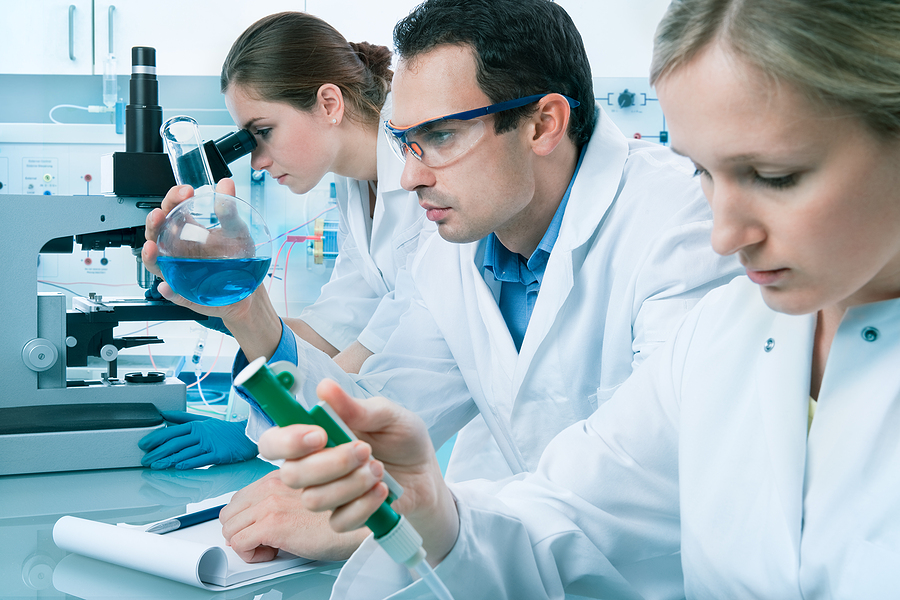The evolution of laboratory spaces:
The change from traditional, more isolated environments to more modern, collaborative hubs, traditionally science labs were characterized as individual sanctuaries whereas now with the option to shared lab space, it allows for better equipment availability and drives the need for redesign.
Modern laboratories prioritize open plan layouts and shared spaces, which fosters interdisciplinary interactions across scientistics and fields in science therefore fostering a more efficient resource utilization.
This shift is being propelled by technological advancements, enabling automated processes and enhancing and allowing for automated processes and more sophisticated instrumentation therefore fostering an environment of efficiency and data management.
Incorporating ergonomic design, these modern labs focus more on the researcher’s well-being while maintaining safety and regulatory compliance.
Advantages of shared lab spaces:
Cost-effective:
- Shared lab space has allowed researchers and institutions to share the financial burden of expensive equipment and maintenance. Therefore allows researchers to place their budget elsewhere and allowing, and opening the doors to more financially unfeasible projects.
Collaboration:
- Is another great advancement.
- Working in a close environment with other professionals in the same, or similar discipline allows for the exchange of ideas and makes collaboration more seamless which in turn has lead to more interdisciplinary research projects.
- Collaboration across different fields and disciplines has resulted in breakthrough discoveries that may not have been possible within the confines of individual spaces.
Enhancing Innovation and Creativity:
- The environment that creates and fosters a more diverse research landscape and making use of shared space can lead to the evolution of new ideas and approaches, often allowing the scientists to be exposed to fresh perspectives and problem-solving methods which often enhance and stimulate their creativity.
- Innovative projects often emerge from collaborative efforts.
- Shared space fosters a culture of brainstorming and continuous learning, fostering an environment where researchers are more likely to experiment with different ideas.
Challenges and Considerations:
- As with any shared space or working environment, some challenges need to be acknowledged and accounted for.
- Managing shared resources can be complex, researchers may need to coordinate equipment usage and schedules, there may also be issues with scheduling conflicts and overcrowding may hinder productivity and collaboration if not handled properly.
- Often maintaining focus in a shared environment is another challenge as sometimes there are more disruptions and distractions.
The Future of Co-Working in Science:
As technology advances and different scientific fields become increasingly interconnected, the future of co-working spaces in science looks promising. We can expect to see more specialized coworking laboratories tailored to specific research needs, fostering an interdisciplinary collaboration environment.
As technology rapidly advances, shared laboratories can integrate virtual reality and augmented reality, which may revolutionize how researchers interact with their environments and colleagues. This development and technological advancement may enhance collaboration and visualization of complex scientific concepts.
Furthermore, as sustainability becomes of paramount concern, co-working laboratories may be more likely to incorporate eco-friendly practices and designs.
The rise of coworking, shared spaces is transforming the science and research landscape which offers many advantages and fosters environments for collaboration and innovation. The shift towards coworking in science is not merely a trend, but it is a transformative force that can reshape the scientific community’s future. By allowing and encouraging collaboration, innovation, and efficiency, co-working laboratories are leading the way for more exciting discoveries and breakthroughs that will benefit society and science as a whole. Opting for a shared lab that allows scientists to focus on their science within a vibrant, collaborative community, making use of our state-of-the-art lab space which has cutting-edge equipment, collaborative workspaces, and amenities that are tailored to fulfill scientific innovation.
Image Source: BigStockPhoto.com (Licensed)








